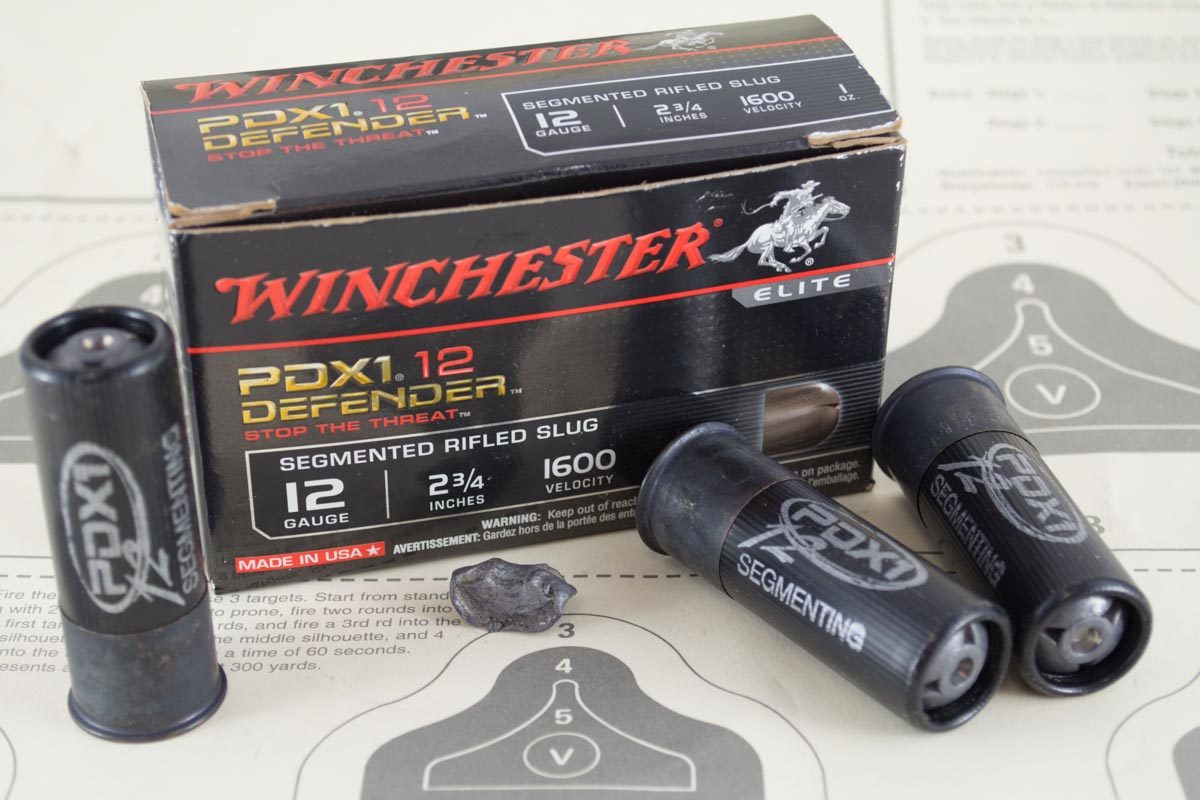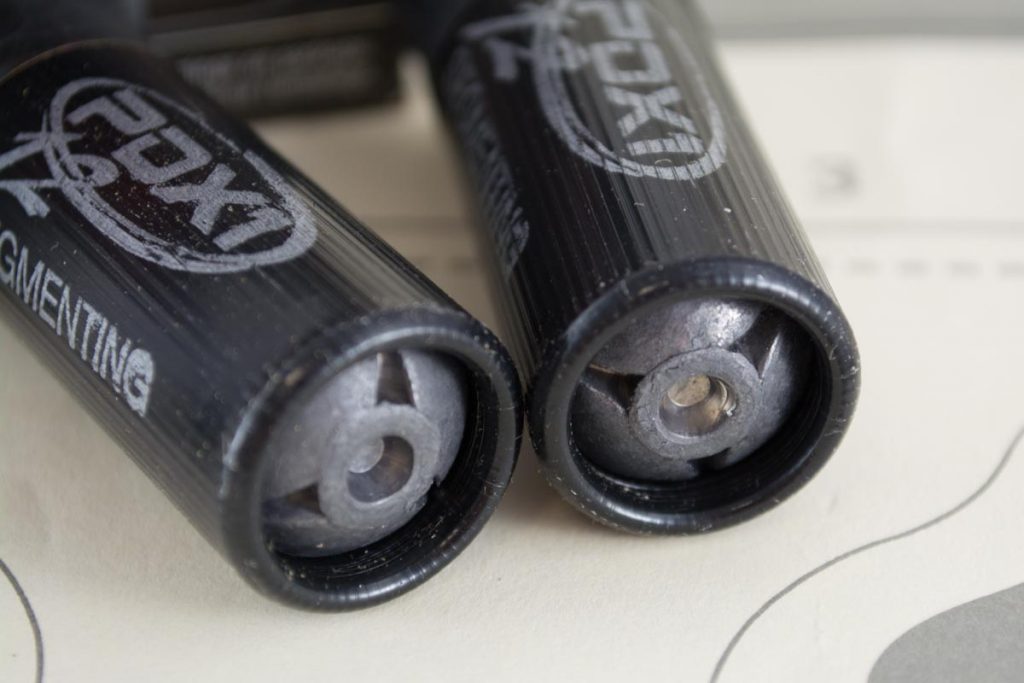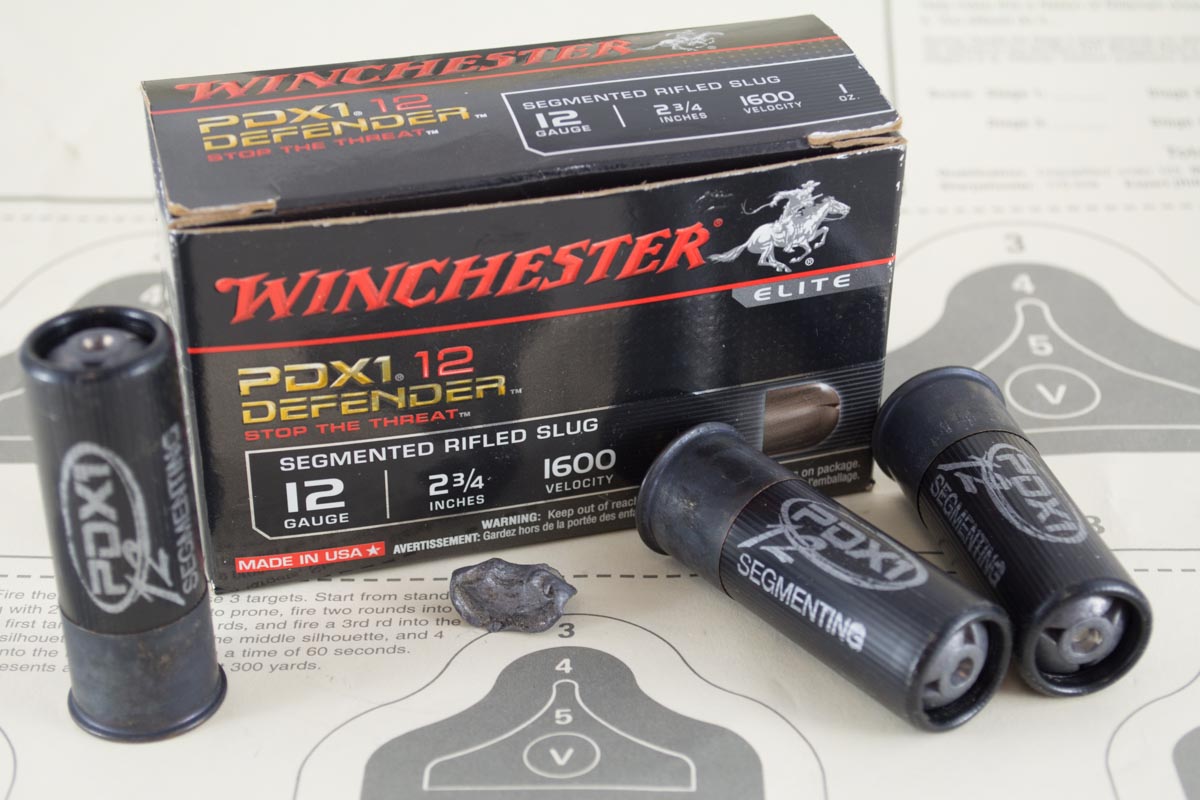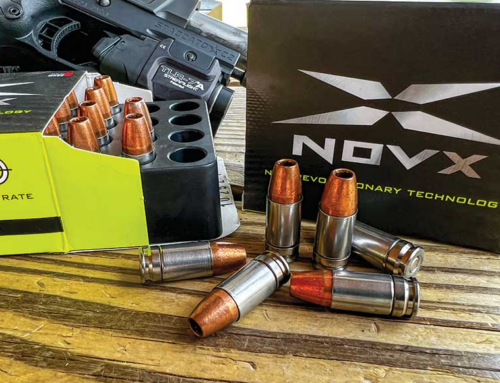
Winchester Ammunition’s PDX1 Defender Segmenting Slugs.
What do you do if you don’t feel that a 12-gauge slug doesn’t have enough stopping power? OK, so maybe if you ever feel under gunned with a shottie slug you’re fighting Godzilla, but, hey, it could happen. You could try to stuff a 40mm grenade in there, but that requires all sorts of complicated licensing. A more realistic option might be to use a fragmenting projectile design. That’s exactly what Winchester Ammunition has done with their PDX1 Defender Segmenting Slug.
The PDX1 Defender brand umbrella covers a lot of territory. Early on, the line was comprised of a range of bonded pistol ammunition. Designed to expand reliably and retain its mass through tough barriers, it quickly gained a reputation for consistent performance across a wide range of handgun calibers. Over time, the PDX1 Defender family has expanded into rifle calibers and a series of innovative shotgun loads. For example, it’s the PDX1 Defender line that offers a .410 shotshell with a combination of disks and buckshot. Another load combines a slug with buckshot pellets. This one is all slug, but with a twist.

Note the specially designed shape and cuts in the slug. These cause it to fragment into three sections shortly after entering the target.
The theory of the Segmented Slug is that shortly after penetrating an organic target, the one-ounce slug will separate into three equal fragments. Each will veer off course to create it’s own separate wound channel. You get the impact of a one-ounce slug with the internal wounding capacity of three separate projectiles.
Let’s do some quick math on this. A one-ounce lead slug weighs 437.5 grains, or about the same as three heavy 9mm or light .40 S&W bullets. Think about that. Once the slug penetrates a few inches, it transforms into three handgun-sized projectiles, each plotting its own course through the target.
Read the rest at GunsAmerica.







Got something to say?